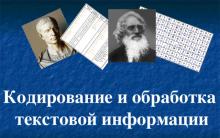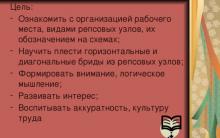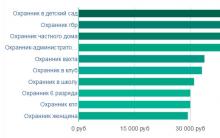Considers the possibility of reactions of alkanes, accompanied by the elimination of part of the molecule. What are these reactions called?
When heated to temperatures above 500°, the bonds between carbon atoms in alkane molecules are broken. And hydrocarbons with a lower molar mass can be formed. Not only alkanes, but also alkenes. This process is called thermal cracking (from the English tocrack - “to chop, split”).
C 10H22---------C5H12+C5H10
C10H22---------C4H10+C6H12
As a result of cracking, a mixture of alkanes and alkenes is formed with fewer carbon atoms in the molecules than the original hydrocarbon. The higher the cracking temperature, the lighter hydrocarbons are formed as a result.
Currently, cracking is most often carried out in industry using catalysts. Aluminosilicates are usually used as catalysts.
Catalytic cracking occurs at lower temperatures than thermal cracking, and not only simple splitting of hydrocarbons occurs, but also rearrangement of their carbon skeleton or isomerization. As a result, hydrocarbons are formed with a more branched skeleton than the original ones.
(catalytic cracking - diagram)
This is important for improving fuel quality. Catalytic cracking of petroleum hydrocarbons is one of the industrial methods for increasing the octane number of gasoline. By increasing the temperature, it is possible to reach a level of reaction at which organic substances - hydrocarbons - are completely decomposed into carbon and hydrogen. This process is called pyrolysis.
When a heated alkane is passed over a platinum or nickel catalyst, hydrogen can be eliminated. This process is called dehydrogenation.
As a result of this reaction, unsaturated hydrocarbons - alkenes are obtained. There is another important process in which alkanes containing more than 6 carbon atoms are heated over a complex catalyst. This catalyst usually consists of aluminosilicates with the addition of platinum. As a result, hydrogen is split off and aromatic hydrocarbons - arenes - are formed. This process is called reforming
It, like cracking, is used in industry to produce gasoline with a high octane number.
There is also a reaction of alkanes that is important for industry – conversion.
CH4+H2O CO+3H2
This is the name for the interaction of alkanes, of which natural gas and water vapor are most often used. At a high temperature of about 1000, a mixture of carbon monoxide - carbon monoxide and hydrogen - is formed. This mixture is called synthesis gas. Often it is not separated, but used to obtain various organic substances.








Algorithm for compiling names of organic compounds Select the longest (main) chain and number it closer to the end to which the radical (substituent, indicated in yellow) is located (3) (4) (5) (6) (7) CH 3 - CH – CH 2 – CH 2 – CH 2 – CH – CH 2 – CH 3! ! (2) CH 2 CH 2 – CH 2 – CH 3 ! (8) (9) (10) (1) CH 3 This substance is called: 3-methyl, 7-ethyldecane

2. The name is constructed in the following sequence: A) PREFIX: consists of a number indicating the number of the carbon atom near which the radical is located. For example: 3- and the name of the radical itself is written. For example: 3-methyl,7-ethyl……. If a molecule contains several identical radicals, then after listing all the numbers indicating their location, a numerical prefix is added to the radical (di - two, three - three, tetra - four). For example: 2,3 – dimethyl………….., or 3,4,5 – triethyl……. B) ROOT: placed in accordance with the homologous series of alkanes (look at the number of carbon atoms in the main chain) C) SUFFIX: alkanes have the suffix “AN”.





5. The angle between carbon atoms in alkanes is: a) 120 degrees b) 90 degrees c) 109 degrees d) 110 degrees 6. A hydrocarbon radical is a) a group of atoms connected to a functional group of a molecule. b) a group of atoms that differs from methane on CH2- c) a group of atoms that has a positive charge d) a group of atoms that is called functional

7. Establish a procedure for determining the name of a hydrocarbon a) Determine the location of the radicals b) Select the longest chain and number the carbon atoms in it c) Determine the root of the name by the number of carbon atoms in the long chain d) Make up a prefix in the form of numbers and Greek numerals 8. Set correspondence: 1. Propane a) CH3-CH2-CH2-CH2-CH2-CH2-CH2-CH3 2. Pentane b) CH3-CH2-CH3 3. Butane c) CH3-CH2-CH2-CH3 4. Octane d) CH3 -CH2-CH2-CH2-CH3


Alkanes are hydrocarbons with the general formula: WITH n H 2n+2 ,
in molecules of which the atoms are connected by single bonds.

Methane
Propane
Ethane
Butane
Structural formula of propane

S R 3 – hybridization
Bond angle -109 O 28
Tetrahedron
Carbon-carbon bond length: 0.154 nm


Alkanes with a large number of carbon atoms have a zigzag structure
Molecule model pentane

Differences in the order in which atoms are combined in molecules (i.e., chemical structure) lead to structural isomerism . The structure of structural isomers is reflected by structural formulas. In the series of alkanes, structural isomerism appears when the chain contains 4 or more carbon atoms, i.e., starting with butane C 4 N 10 .
WITH WITH
WITH WITH WITH WITH WITH WITH WITH WITH
WITH WITH
2,2 dimethylbutane
2,3 dimethylbutane

All alkanes are poorly soluble in water. With increasing molecular weight, the boiling and melting temperatures naturally increase.
Starting with hexadecane, solid alkanes appear.

1 – separation of hydrocarbons from natural raw materials
2- hydrogenation of cycloalkanes and unsaturated hydrocarbons
4- Wurtz synthesis
5- hydrolysis of carbides

Hydrogenation reactions
Cycloalkanes:
WITH 5 N 8 + N 2 = C 5 N 10
Alkinov:
WITH 2 N 2 + 2H 2 = C 2 N 6
Alkenov:
WITH 2 N 4 + N 2 = C 2 N 6
Alkadienov:
WITH 4 N 6 + 2H 2 = C 4 N 10
+ N 2

Methane production when fusing sodium acetate with alkali :
CH 3 COONa+ NaOH CH 4 +Na 2 CO 3
sodium acetate methane
Properties of methane:
1) methane does not enter into an oxidation reaction when exposed to an aqueous solution of KMnO 4 ;
2) methane does not react with bromine solution;
3) methane combustion:
CH 4 + 2О 2 CO 2 + 2H 2 O + Q

Wurtz synthesis
carried out to obtain alkanes with a longer carbon chain.
For example: producing ethane from methane
Stage 1. Halogenation of the parent alkane
CH 4 + C l 2 = CH 3 Cl+HCl
2 stage. Interaction with sodium
2CH 3 Cl+ 2 Na=C 2 H 6 + 2NaCl

Methane can be obtained in the laboratory by hydrolysis of aluminum carbide
Al 4 C 3 + 12 H 2 O= 4 Al(OH) 3 + 3 CH 4

1- substitution reactions
2-dehydrogenation reactions
3- combustion reactions
4 - isomerization reactions
5- thermal splitting

Methane chlorination:
CH 4 + Cl 2 = CH 3 Cl+HCl
CH 3 Cl+Cl 2 = CH 2 Cl 2 +HCl
CH 2 Cl 2 + Cl 2 = CHCl 3 + HCL
CHCl 3 + Cl 2 = CCL 4 + HCL
Example of a substitution reaction:
Reaction of decane with bromine
C 10 H 22 + Br 2 = C 10 H 2 1 Br + HBr

When alkanes are dehydrogenated, alkenes and other unsaturated hydrocarbons are formed.
For example, dehydrogenation of pentane:
WITH 5 N 10 WITH 5 N 8 + N 2
penten

All alkanes burn to form carbon dioxide and water.
For example: butane combustion
2C 4 N 10 + 13О 2 = 8СО 2 + 10N 2 ABOUT

Isomerization reactions occur with heating and in the presence of a catalyst
For example: isomerization of pentane (with aluminum chloride)
CH 3 -SN 2 -SN 2 -SN 2 -SN 3 CH 3 -CH-CH 2 -SN 3
CH 3

Thermal decomposition
1- cracking (400-500 O WITH)
Alkane new alkane and alkene
WITH 20 N 42 WITH 10 N 22 + C 10 N 20
2- pyrolysis of methane at 1000 O WITH
CH 4 C + 2H 2
3- production of acetylene by heating to 1500 O WITH
2CH 4 WITH 2 N 2 + 3H 2

Preparation of solvents
Acetylene production
As well as raw materials for the synthesis of alcohols, aldehydes, acids.
Fuel for diesel and turbojet engines
In metallurgy


- What hydrocarbons are classified as alkanes?
- Write down the formulas of possible hexane isomers and name them using systematic nomenclature.
- Write the formulas for possible octane cracking products
4. In what volume ratio does a mixture of methane and air become explosive?
5. What are the natural sources of alkanes?
6. Name the areas of application of alkanes
TEST

ANSWERS TO THE TEST:
Lesson - learning new material
"Chemical properties and applications of alkanes".
10th grade, lesson duration 45 minutes.
The purpose of the lesson: Study of the chemical properties of alkanes, features of equations and conditions for reactions involving organic substances. introduce students to the main areas of application of alkanes.
Lesson objectives: the formation of communication skills, self- and mutual-control skills, the development of the ability to apply acquired knowledge in a similar or new situation, the development of intellectual abilities.
Equipment: mobile class, presentation “Chemical properties and applications of alkanes”, table “Natural gas - chemical raw materials”, “blue” box - it contains a newspaper, a refrigerator, a gas cylinder, a car wheel, a machine, a cartridge. On the table there is a candle, riddles on the use of alkanes (Appendix No. 4), on the desks there are worksheets (Appendices 1,2,3), colored sheets of paper (according to the number of groups).
Board design: on the left - the chemical properties of alkanes - reaction equations, duplicated from Appendix No. 2 (writing equations with colored chalk according to the color of sheets of colored paper on the desks), on the right - equations illustrating the chemical properties of sulfuric acid (basic), both records are covered with white sheets of different sizes, on on the back of the left board is the table “Natural gas - chemical raw materials”, on the back of the right board is the “key” to solving the verification test (Appendix No. 3).
During the classes:
1. Organizational and motivational stage (3-5 min.)
Teacher activities
Student activities
Greetings:
- “Hello, I welcome you to another chemistry lesson and am glad to see everyone in the class. Tired? We will need strength in class today. Here is what Disterweg says about this: “Development and education cannot be given or communicated to any person. Anyone who wants to join them must achieve this through his own activity, his own strength, and his own effort.” And the strength will really come in handy, because... Today we have to deal with the white spots on the board and this blue box. Ready?
They greet the teacher, are intrigued by the presence of a candle and a velvet box on the table, and express their readiness to start the lesson.
Before we begin to unravel the mystery of the two white spots on the board, let’s see what blind spots we have in our knowledge of saturated hydrocarbons.
Students turn to the worksheet pasted in their notebooks on the last page entitled “I know, I can” (Appendix 1), where the signs + or – indicate the assimilation of the material and report that they do not know the chemical properties of alkanes, the features of reaction equations and applications alkanes.
Indeed, these are the two questions we have to consider today.
Write down the topic of the lesson.
Tell me, what do the chemical properties of substances depend on?
From the structure and composition of the substance (use the hint on the “I know, I can” worksheet, if necessary)
Okay, what composition do alkanes have?
They are composed of two chemical elements carbon and hydrogen.
What structure do these hydrocarbons have?
All atoms in a molecule are connected by single bonds.
Agree, alkanes have a fairly simple structure and composition. Maybe chemical properties can be described by a simple chemical reaction, for example, the burning of a candle (pointing to the candle on the table).
They agree, because a candle is a solid hydrocarbon that burns well and the reaction products can be determined.
Well, let's check and deal with these white spots on the board. Behind them are hidden records of the chemical properties of substances, on the one hand - inorganic - sulfuric acid, on the other - methane and its homologues. Guess where and what records?
Children point to the small sheet on the right, suggesting that the properties of alkanes are written there and, accordingly, on the left behind the large sheet - the properties of sulfuric acid.
Let's check (opens white sheets).
Children groan! and conclude that substances of simple structure and composition do not always have “simple” chemical properties.
They express interest and desire to study in detail all chemical reactions and their features.
2. Information and search stage. (20-25 min.)
Teacher activities
Student activities
Operating procedure:
On the tables there are worksheets (Appendix No. 2), in which the writing on the board is duplicated (the equations are written with colorful chalk, and on the desks there are the same sheets of colored paper - this is an indicator of what reactions this group is considering);
On the computer desktop there is a presentation “Chemical properties of alkanes”, a textbook;
- “Your task: carefully read the material in the presentation and textbook, give a full description of “your” reactions and present them to the class, and also be prepared for the groups to ask a question if something in this reaction is not clear to them. We record the information in our worksheets”;
The work time is 10 minutes.
They decided on the groups and reactions that they need to study and present to the class (on colored paper). They carefully study and review the presentation and textbook material, make notes on their worksheets, prepare for the presentation, and distribute reactions among themselves.
After the time has passed, he invites the groups to present their material one by one.
The groups present the material, the rest record it, ask questions, clarify the names, features and conditions of the reactions.
When finished, compare the notes on the board and your worksheets again.
Okay, we’ve sorted out the chemical properties, let’s start studying the use of alkanes, in particular natural gas, we can’t leave this cute blue box without attention! (shows the table “Natural gas – chemical raw materials”). Review the uses of natural gas using this table and picture in the textbook.
Study the table and figure in the textbook. They look with interest at the blue box on the table. Ready to list the applications of alkanes.
- To sum up the results effectively, I suggest you exercise your strength
Children leave their desks and, together with the teacher, perform an exercise: they rise on their toes, raise their arms up, while inhaling deeply, lowering and exhaling (3-4 times). Then they turn their heads left and right and smile at their neighbor.
3. Evaluative-reflective stage. (12-15 min)
Teacher activities
Student activities
Perform the test individually and sign the sheets.
Ready to check it out? (correct answers on the spread of the right board), mark the number of correct answers and transfer the result to the sheet “I know, I can” with the appropriate sign (all answers are correct - sign + in the column Chemical properties of alkanes, four answers are correct, sign - , if 3, then - Share your results.
They check the answers, mark them on the worksheet, analyze and report what shortcomings or mistakes they made, what they coped with or not, and what needs to be studied further on their own.
The sheets are handed over to the teacher.
Name the areas of application of methane and its homologues (invites one of the students to help open the blue box).
If there are difficulties, the teacher asks riddles (Appendix No. 4)
The student takes out objects from the box, the children take turns naming the object and the substance that is used to make it or the area of application.
Well done, you also coped with the use of alkanes, mark the “Use of alkanes” column in the “I know, I can” sheet with a plus.
Working with worksheets
Write down your homework: Himul website, lesson 7-8, find in this material something that we didn’t find in today’s lesson.
Write down homework.
Any questions? Thank you everyone, goodbye.
Chemical propertiesalkanes
Paraffins - parum affinitas (lat.) – having no affinity.
A
A
B
B
A+ + B A- + B+
A+B
heterolytic
disconnection
homolytic
disconnection What type of communication breakdown is typical?
for alkanes?
CH3- + H+
H3C H
369 kcal/mol
CH3+H
102 kcal/mol
CH3+ + H-
312 kcal/mol
energy
dissociation
communications
Conclusion:
Homolytic bond cleavage
more beneficial for alkanes 1.Halogenation
(Reaction of metalepsia by Dumas, 1828)
hν
CH4 + Cl2
CH3Cl + HCl
gross reaction
goes only in the light!
Cl
Cl 58 kcal/mol
Cl
Cl
C
Cl+ + Cl- 270 kcal/mol
H 102 kcal/mol
hν ~ 70 kcal/mol 1 quantum of light close to hν causes homolysis of the Cl2 molecule
The chlorination reaction proceeds as a chain reaction
radical unbranched reaction.
At 1 hν ~ 10000 cycles
3 stages
1. Initiating the circuit
ClCl hν 2Cl
2. Chain development
CH3 + HCl
CH4+Cl
CH3 + Cl2
CH3Cl + Cl
CH2Cl + Cl2
CH3Cl + Cl
CH2Cl + HCl
CH2Cl2 + Cl….. CHCl3, CCl4
The chain continues as long as there are active radicals 3. Chain termination (death of active radicals)
Cl
+CH3
CH3 + CH3
2Cl
CH3Cl
H3C CH3
recombination
dimerization
Cl2
Addition of stable radicals:
CH3 + H2C
H2
H3C C Bromination of alkanes proceeds similarly, but
more slowly and selectively: the bromine radical preferentially abstracts a hydrogen atom from the secondary or
tertiary carbon atom
BR 2
hν
2Br
H3C
H2
C CH 3
H3C
H
C
CH3
H3C
Br2
H
C
CH3 + HBr
H
H3C C CH 3 + Br
etc.
Br
Iodination is not feasible because the reaction
totally endothermic and requires high energy
activation. Iodination reaction becomes possible
only at a temperature of about 4500C. Fluoridation is an extremely exothermic process,
significant charring occurs. If an alkane is taken
different from methane, then the C-C bonds are broken in the process.
As a preparative method for obtaining fluorides
fluoridation with elemental fluorine is not used.
Nitration reaction
The nitration reaction was first carried out by Russian
chemist M.I. Konovalov in 1893. Smoking
nitric acid causes inflammation
organic substances, i.e. intensive process
oxidation. Konovalov took diluted acid:
CH
HNO3 (11 - 14%)
0
150 C, sealed tube
CNO2 The reaction mechanism is not completely clear. Clearly
it has been established that it is radical and active
the particle is NO2. Currently
The following mechanism for this reaction is accepted:
HNO3 +CH4
HNO3 +HNO2
NO2 +CH4
2HNO2
NO + 2HNO3
NO2 + CH3
CH3NO2 + H2O
2NO2 + H2O
HNO2 + CH3
NO2 + NO + H2O
3NO2 + H2O
CH3NO2
In concentrated nitric acid the source of the NO2 radical is
there may also be decomposition of the HNO3 molecule:
HNO3
NO2+OH
2HNO3
NO2 + NO3 + H2O Sulfochlorination reaction. For
understanding the mechanism of this reaction is important
know that in the SO2 molecule there is a sulfur atom
there is a lone pair of electrons:
Chain initiation:
hν
2Cl
ClCl
S
O
Chain development:
CH4+Cl
CH3+S
O
O
H3C S + Cl2
O
HCl + CH3
O
H3C S
O
O
methyl sulfoxide
O
O
H3C S Cl + Cl
O
methyl sulfochloride O
O
H3C S Cl + NaOH
O
H3C S ONa
O
Mersolates – synthetic detergents
The preferential interaction of the alkyl radical with
sulfur dioxide, leading to sulfochlorination, and not with
chlorine molecule (which should give the product
chlorination) is ensured by the fact that
SO2 is deliberately taken in very large excess
Long chain alkanes are introduced into this reaction
(number of carbon atoms – ten or more). Oxidation reactions. Oxidizing agents, even such strong ones as
chrome mixture, potassium permanganate or strong
inorganic acids at ordinary temperatures do not
act on saturated hydrocarbons.
Flame oxidation leads to complete combustion of all
alkanes to CO2 and H2O. This reaction is widely used
for energy, but not for chemical purposes. Oxidation
begins already at pre-flame temperatures according to the type
branching chain reactions: CH4 + 2O2
CO2 + 2H2O
RH+O2
R + HOO
R+O2
ROO
OH+O
ROO+RH
ROOH+R
ROO+R
ROOR In the first phase of hydrocarbon oxidation, RH is used as
low-sustainable
intermediate
products
are formed
hydroperoxides ROOH, decomposing to form aldehydes,
ketones, alcohols, acids, as well as short-lived radicals R.
This is what burning gasoline looks like in a car engine.
In an internal combustion engine, when a mixture of vapors is compressed with
air, normal hydrocarbons form peroxides,
causing premature ignition without participation
spark plug, which produces a spark only at the moment of greatest
compression of a gas mixture by a piston. This phenomenon is called -
detonation and causes harm, because promotes wear
engine and does not allow full use of its power.
Branched paraffins do not have this disadvantage. (Reaction
chain, free radical - more stable radicals will
promote the “smooth” course of the reaction). In 1927, after it was discovered that different
gasolines
have
various
detonation
properties, standards were introduced. For the best
gasoline known at that time was isooctane (2,2,4trimethylpentane), detonating at high degrees
compression, the octane number was taken to be 100, and for nheptane, which is especially prone to detonation, it was taken to be 0.
CH3
CH3
H3C C CH2 CH CH3
CH3 CH2 CH2 CH2 CH2 CH2 CH3
CH3 100
0
The quality of gasoline, i.e. its octane number, increases sharply when adding
small amounts of anti-knock agents.
4PbNa
alloy
+
4C2H5Cl
Pb(C2H5)4 + 4NaCl + 3Pb
tetraethyl lead
TES is poisonous, causes cirrhosis of the liver and cancer.
The mechanism of action of tetraethyl lead in n-alkanes
ΔPb(C2H5)4
Pb + 4C2H5
H2 H2 H2
H 3C C C C CH3 + C2H5
H H2
H2C C C CH3
CH3
C5H12
H2 H H2
H3C C C C CH3 + C2H6
H H2
H 3C C C CH3 + C5H11
CH3
etc. Nesmeyanov proposed a CPM - gasoline is also more efficient
with this additive are non-toxic:
cyclop
(you can get fuel from
OC Mn CO
octane number 135)
CO CO CO
In diesel and rocket fuels, where air is compressed and
then gasoline is supplied, the fuel's ability is valuable
light up quickly. There is an inverse relationship here: the most
valuable fuels consist of normal hydrocarbons.
The ignition ability of a fuel is expressed in cetane
numbers. In the evaluative conventional scale of “cetane numbers” point 100
The hydrocarbon corresponds to cetane (hexadecane): С16Н34, and to point 0 - αСН3
methyl naphthalene:
Most automotive diesel engines require fuel with
cetane number 45. Cracking of alkanes.
Methane is the most thermally stable of the alkanes. He
undergoes thermal decomposition at 1400:
2CH4
С2H2
+
3H2
This is a thermal process. One of the industrial
methods for producing acetylene. Hydrocarbons containing
longer chains break in any random place
chains. As a rule, an equimolar mixture of alkanes and
olefins
CH3(CH2)4CH3
~
°
1500
CH3+
CH2CH2CH2CH2CH3
CH3CH2 + CH2CH2CH2CH3
CH4 + CH2 CHCH2CH2CH3
CH3CH3 + CH2 CHCH2CH3
In 1934 Goodry (USA)
introduced catalytic cracking into practice
aluminosilicate catalysts, allowing to obtain gasoline with high octane
number (up to 80). Aluminosilicates act as acid catalysts under these conditions.
It is believed that thermal cracking is a purely homolytic process.
Catalytic is a heterolytic process that occurs with the formation of ions that
are regrouped into secondary and tertiary as the most stable. Hence
higher octane number.
Ionic reactions of alkanes
Due to the fact that alkanes are resistant to the action of conventionalionic reagents, ionic processes for alkanes can be
expect only in those cases when they will be fulfilled according to
at least two conditions:
Aggressive ionic reagent
Reaction conditions that allow
stabilize the resulting ionic intermediates
account of solvation, as well as ensuring the presence
counterion.
Ionic reactions of alkanes
Deuterium exchange
Halogenation
Nitration
Isomerization Deuterium exchange
In 1968, Ola carried out the deuterium exchange reaction:
CH 4
DF + SbF5
CH 3D
The process of replacing hydrogen with deuterium in this reaction was explained
intermediate formation of methonium ion CH5 or CH4D+. Existence
CH 5 ion was proven using mass spectral studies in gas
phase. This ion has been found to be relatively durable. Dissociation energy
it according to the scheme:
CH3 + H2
CH5
ΔН = 40 kcal/mol
The methonium ion contains carbon bonded to five hydrogen atoms rather than four,
as in methane. That is, in this ion the connection of hydrogen atoms with a carbon atom is ensured
with only four electrons. The carbon atom in such an ion is called
hypercoordinated, and the connection is electron-deficient. To understand how it is formed
bond in the methonium ion, let us first consider the well-known example of a compound with
electron-deficient bonds – H 3 ion
N
N
+
O
0.87A
N
N
N
O
0.75 A A pair of electrons, which in the H2 molecule provided a bond between two atoms, in
H 3 already serves three atoms. This type of connection is called three-center
ion
two-electron (3c–2e). According to calculations, this system has the following set
orbitals (provided that the ion is an equilateral triangle, and
It is precisely this geometry that corresponds to the minimum energy):
+
loosened
1s
1s
N
1s
N
communication
N
The formation of methonium ion in a superacidic environment is favored by the factor
that when a proton (deuteron) is removed from a superacid, extremely
stable complex ion:
DF +SbF5
D+SbF6-
A
B
CH4
DF + SbF5
H
F
SbF3
H 3C
D
B
F
SbF6
A) CH3D
B) CH4
B) CH3+ H
CH4 + +
H3C
CH 3
SbF6
-H+
H3C CH3
Halogenation.
Ionic chlorination can be carried out in a similar way.
methane in a solution of “magic acid”:
Cl2+SbF5
ClCl
Cl+SbF5Cl-
SbF5
A
H
CH4 + ClCl
A
B
SbF5
H 3C
Cl
B
CH3Cl + H+
Cl-
CH3Cl
HCl + CH3+
CH3Cl
H3C
Cl
CH3
SbF5Cl- Nitration The nitration of alkanes can also be carried out using the ionic mechanism. For this
you need a powerful ionic nitrating agent - nitronium tetrafluoroborate.
NO2+BF4- + H2O*BF3
HNO3 + HF + 2BF3
O
N
BF4
O
The reaction is carried out at a low temperature and is used as a solvent.
mixture of dichloromethane and tetramethylene sulfone (sulfolane):
O
CH4+N
H
H 3C
BF4
CH2Cl2+
O
O
CH3NO2
N
S
O
O-BF4O
-H+ Isomerization.
In 1946, it was shown that butane isomerizes to
thermodynamically more stable isobutane in the presence
Lewis acid - aluminum chloride. It was found that
this reaction occurs only in the presence of an admixture of HCl. In the absence of
HCl reaction does not occur. In the initial stages of the reaction
A small amount of hydrogen is released:
CH3
CH3CH2CH2CH2
AlCl3
HCl impurity
H3S
CH
CH3 + some H2
at the beginning of the reaction
The mechanism of this reaction became clear after the work of Ola and includes
formation of cations with hypercoordinated carbon. H3C
H2 H2
C C CH3 + HCl + AlCl3
H
C
H3C
H
H3C
- H2
CH 3
H3C
C
H
CH 2
H
C
H2
CCH3
H3C
H2
C CH 3
AlCl4-
H
CH 3
CH3
H2 H2
C C CH3
H3C
C
H
CH 2
CH3
H3C
C
H
CH3 + H3C
H
C
H2
CCH3
ETC.
Alkylation
Electrophilic alkylation is carried out byinteraction of alkanes with previously obtained
carbocations R3C+ (for example t-Bu+SbF6-) or R3C+,
resulting from hydrogen transfer:
R3CH + H+
R3C+ + H2
Medium – sulfuryl chloride fluoride solution, t= -780C
(CH3)3C+SbF6- +
(CH3)3CH
SO2ClF
0
-78 C
(CH3)3C
C(CH3)3+ HSbF6
~2%
Reducing spatial obstacles increases yield
(CH3)2CH+SbF6-
+ (CH3)3CH
SO2ClF
-780C
(CH3)2HC C(CH3)3 + HSbF6
~12%
Methods for producing alkanes
1. Methane can be obtained from aluminum carbide:Al4C3
H2O
4Al(OH)3 + 3CH4
Aluminum carbide
2. Fischer-Tropsch synthesis
It is possible to obtain saturated hydrocarbons from synthesis gas with
chain length 12-14 carbon atoms:
nCO + (2n+1)H2
Synthesis gas
CnH2n+2 + nH2O











Such work" Sergey Demyanov
Unsweetened life Can a diabetic work as a security guard?
How long does it take for a parcel from China to Russia from Aliexpress?
How to find a good job - a detailed guide for those who want to get their dream job!
Presentation on the topic “Acmeism